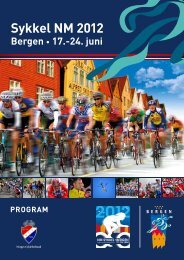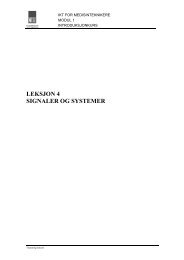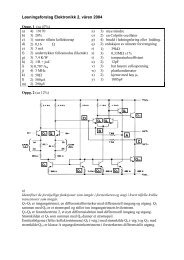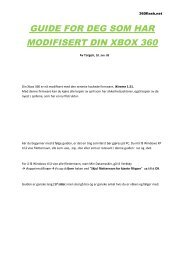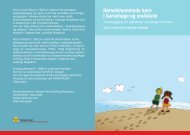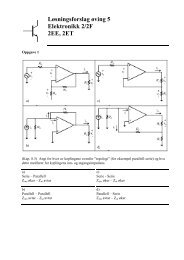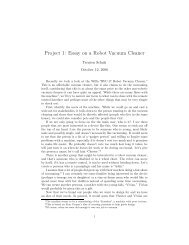The Online World resources handbook
The Online World resources handbook
The Online World resources handbook
You also want an ePaper? Increase the reach of your titles
YUMPU automatically turns print PDFs into web optimized ePapers that Google loves.
<strong>The</strong> <strong>Online</strong> <strong>World</strong>: What is it? http://home.eunet.no/~presno/bok/2.html<br />
In May 1991, Kidlink arranged a full day chat between kids from all over the<br />
world. Line, a 12 year old Norwegian girl, started the day talking with Japanese kids at<br />
the Nishimachi and Kanto International School in Tokyo. When her computer was<br />
switched off late that night, she was having an intense exchange with children in North<br />
America.<br />
<strong>The</strong> chats took place on various online services and networks, including Internet<br />
Relay Chat (IRC), BITNET's Relay Chat, Cleveland Free Net (USA, now defunct),<br />
TWICS in Tokyo, the global network Tymnet, and the Education Forum on<br />
CompuServe.<br />
<strong>The</strong> discussions had no moderator. This made the meetings chaotic. but the kids<br />
enjoyed it! One line messages shot back and forth over the continents conveying intense<br />
simultaneous conversations, occasionally disrupted by exclamations and requests for<br />
technical help.<br />
Speed is a problem when chatting. It takes a lot of time as most users are<br />
slow typists.<br />
If an individual message spans more than one line, there is always a risk that it will be<br />
split up by lines coming from others. It takes practice to understand what goes on.<br />
Users of SciLink (Canada) use a method they call 'semi sync chat'. <strong>The</strong> trick is to<br />
use ordinary batch mode conferences for chatting. Instead of calling up, reading and<br />
sending mail and then log out, they stay online waiting for new messages to arrive. This<br />
approach allows the entry of multiple line messages without the risk of them being<br />
broken up by other messages. <strong>The</strong> flow of the discussion is often better, and each<br />
person's entries easier to understand.<br />
File transfers<br />
Millions of files are transferred to and from the online services each day: Books and<br />
articles, technical reports, graphics pictures, files of digitized music, weather reports, and<br />
much more. Retrieval of free or inexpensive software is a very popular service on the<br />
Internet, and other free services.<br />
In February 1994, users downloaded 105 megabytes' worth of public domain and<br />
shareware programs from of my BBS, though it only one phone line and a 9,600 bits/s<br />
modem. Add to this the megabytes being downloaded from hundreds of thousands of<br />
other bulletin boards. <strong>The</strong> number is staggering.<br />
If you want to download software, check out appendix 3 for additional<br />
information.<br />
Downloading is simple. Just connect to a service, order transfer of a given file, select a<br />
file transfer protocol (like XMODEM), and the file comes to you through the phone line.<br />
On the Internet, you may just locate the file with your browser, and then simply<br />
click on the file name to transfer it. Often, files are also transferred using a command<br />
called FTP (File Transfer Protocol), or by using special computer programs for file<br />
transfers.<br />
If you cannot receive files as explained above, check if you can have files<br />
sent by email using a technique called UUENCODEing. Here, the file is<br />
converted before transfer into a format that can be sent as ordinary mail<br />
(into a seven bits, even character code).<br />
When the file arrives in your mailbox, you 'read' it as an ordinary<br />
message and store the codes in a work file on your disk. Finally, you<br />
decode the file using a special utility program (often called UUDECODE).<br />
Read more about this in Chapter 12.<br />
Conferences and discussions<br />
<strong>Online</strong> conferences have many things in common with traditional face to face<br />
conferences and discussions. <strong>The</strong> main difference is that the participants do not<br />
7 of 12 23.11.2009 15:43




